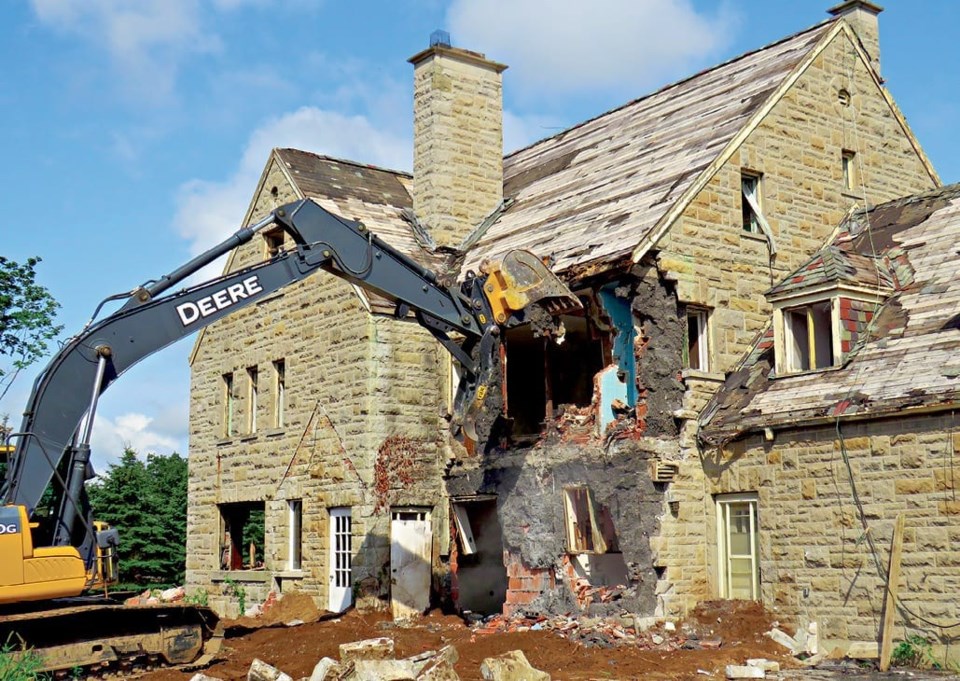BY VOICE STAFF
The long-threatened demolition of the Timmsdale House, at 202 Highway 20 West, began in earnest last week. A crew of three operating different sorts of no-nonsense machines took part in bashing down the house’s outer frame. An excavator clawed at the walls, pulling the grey facade off and digging to the red brick underneath. A backhoe and bulldozer pushed and sorted the debris one it had been detached.
The process, which the workers on site estimated would take a week, signifies the end for what was an iconic home in Pelham. Last summer, nearby residents petitioned the Town to give the house heritage status, protecting it from destruction, but after receiving an assessment of $2.2 million for its maintenance, the Town declined to accede to such a status. Council encouraged the preservation of architectural features, ones that could potentially be preserved in future development—and perhaps certain elements of the interior have already been removed—though the demolition crew indicated that they would be destroying the entire building.
“It was a nice place, in its day,” the excavator operator said as he returned to work, punching a hole in an upstairs wall and revealing a blue-tiled bathroom within.
Built in 1942, the Timmsdale House was originally the home of Reg Timms, an immigrant from England. Timms’ father owned a construction company there, and when Timms moved to Canada, he started a similar business here in Niagara. When building his own home, Timms imported supplies from England and designed the home in Tudor-revival style.
For a time, the provincial Ministry of Natural Resources possessed the property, which initially included many acres to the west, then sold it to other private owners. In the first few years of our present century, this family severed the western acreage and sold it to a developer, who in turn built the enormous homes that comprise Timmsdale Estates. Seemingly little time or money was put into repairing the main home.
In the 2016 report that the Town received, Shoalts Engineering detailed the extensive deterioration of the house—and especially its interior. The entire electrical and plumbing systems required replacing, the roof leaked heavily, substantial mould was present, and the firm thought it probable that both asbestos and lead were prevalent throughout the structure. While the report began by saying, “The interior of Timmsdale is impressive at first glance,” it quickly notes that this, “first impression is soon replaced by concern.”
Nevertheless, the report’s attached photos still depicted a majestic place. Even in the gloom, the wood paneling glinted, and a long-case clock kept watch at the end of the main hall. An A-shaped conservatory, roofed with blue cathedral glass, clung to the back wall.
But not anymore. Where was once the greenhouse stood the excavator last week, breaking apart the imported bricks. Restoring the house would have been, in Shoalts’ words, “a monumental task.” Tearing it down was less so.



